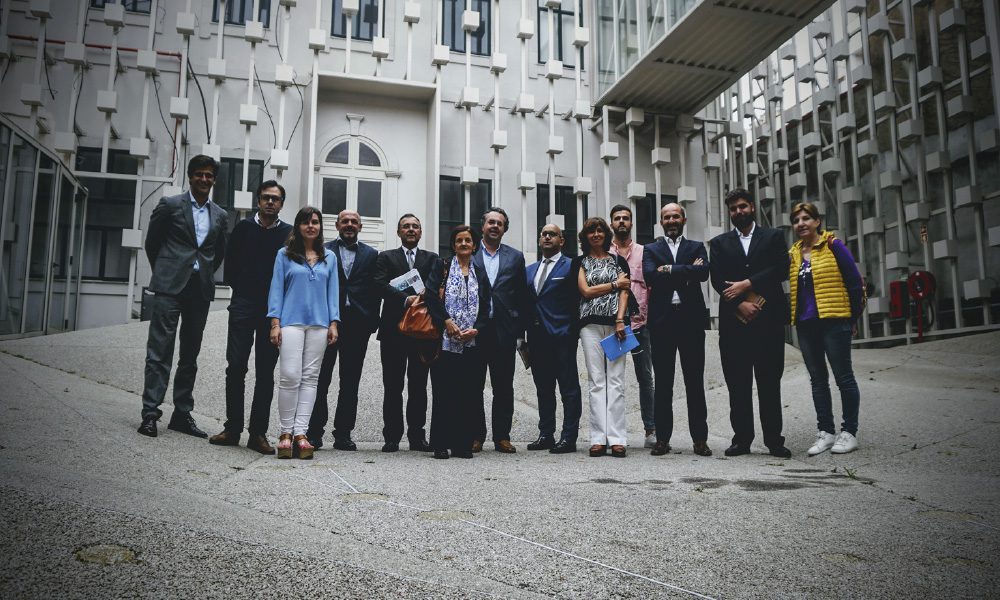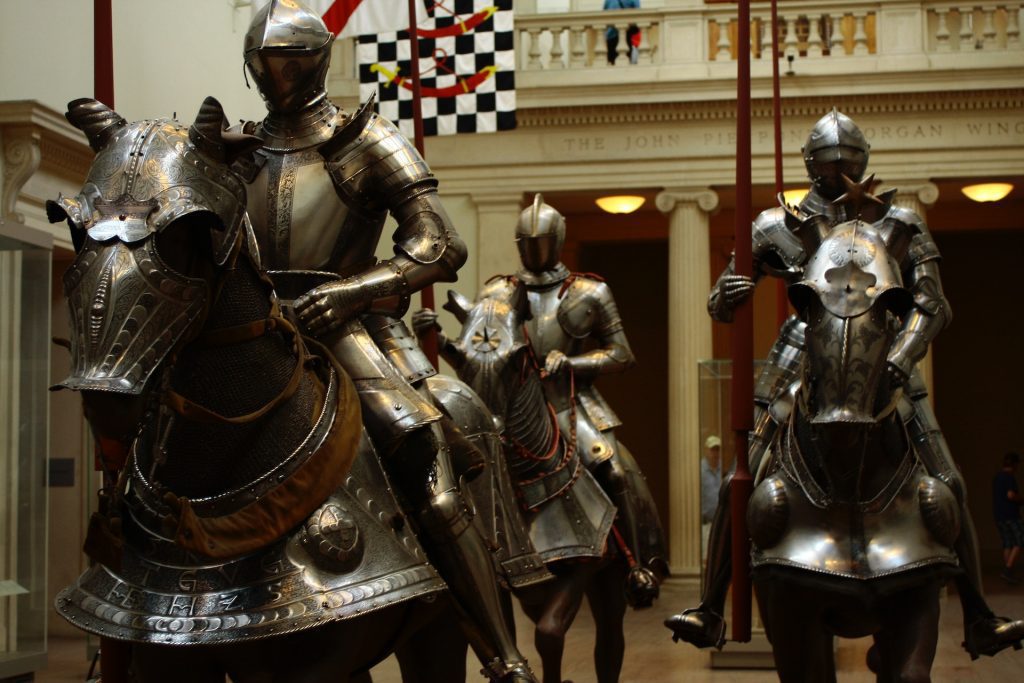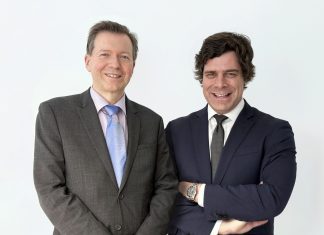A Past with History (Background)
Braga is one of the oldest cities in Portugal, with over 2,000 years of existence filled with history, civilizations, people, and cultures. The civitas Bracara Augusta was founded in the year 20 BC, during the Roman conquests, and was dedicated to Emperor Augustus.

Known as the “Portuguese Rome” for its numerous squares, churches and chapels – 162 in total – Braga was the largest and most important city in the Roman Empire times. It was also the ex-libris of the national Baroque Art, an artistic current that can still be contemplated in places like the Town Hall, the Main Altarpiece of the Tibães Monastery, the Church of St. Madalena da Falperra, and the Raio Palace.
Braga holds a large amount of buildings that were scarred by time, and for instance, the oldest cathedral of the country – Sé de Braga – dating from 1070. This is also where Dom Henrique and Dona Teresa are buried, Dom Afonso Henriques’ (Portugal’s first king) parents.
For centuries, its Archbishop was the most important one in the Iberian Peninsula and, as a result, Braga is also known as the “City of Archbishops”.
In fact, according to a Bloom Consulting study 68% of tourists associate the city with religion or religious monuments, and most of them pass through the city as part of a religious itinerary including the Three Sacro-Montes of the Braga mountain range: the Sanctuary of Bom Jesus, the Sanctuary of Sameiro, and the Shrine of Falperra.
As the region’s main tourist attraction was elevated to National Monument in 2019 as well as proclaimed as UNESCO World Heritage Site, the Bom Jesus do Monte Sanctuary will certainly attract more domestic and foreign tourists in the near future.
Commonly known as Bom Jesus de Braga, this sanctuary watches over the city from the top of its hill. Its Baroque staircase has more than 500 steps and is adorned with multiple thematic fountains. The bravest who climb those stairs are rewarded by reaching the neoclassical-style building. The ones who use the funicular can also enjoy the reward.

Braga is thus a reflection of Portugal as religious tourism attracts about 7 million people every year, and according to the Portuguese Tourism Confederation, it represents more than 700 million euros in terms of annual receipts. The only place ahead of Braga is the Fatima Sanctuary.
From ancestors to the future: more than a religious destination (Challenge)
Transitioning East and West, lying between mountains, forests, valleys, and green fields, Braga is a land built by nature and shaped by man. The region ranges between 20 and 572 meters of altitude, bathing on the banks of the Douro River and the Minho River. With its 183.4 km² and its resident population of 192,494 thousand inhabitants, it’s the third-largest urban centre in the country, just behind Lisbon and Oporto.
The rural areas that once prevailed are now confined to the limits of the municipality, which is predominantly urban and has an ever-increasing demographic curve. This contrasts with Idanha-a-Nova, where the Place Brand remained undeniably linked to the field.
It is said that Braga carries a little from all of Minho and that all of Minho carries a little of Braga. Hence, it became Minho’s capital, as it’s also located in the heart of the region.
As it is an ancient city of traditional religiosity, Braga holds rooted customs and habits. However, it also fosters entrepreneurship and young spirits. This vitality can be felt in its culture, commerce, gastronomy, industry, and services.
Elected as the European Youth Capital in 2012 and the Ibero-American Youth Capital in 2016, Braga is still one of the youngest cities of Portugal and Europe with more than 85,000 permanent residents in the city, complemented by about 20,000 students from the University of Minho.
Because it is the centre of one of Portugal’s leading universities, it is often the stage of innovative ideas, making it one of the most prominent references for national entrepreneurship and an example to follow for staying up to date with current and future trends. Braga managed to reinvent itself by following the ever-changing times, and by helping to define them.
In Bloom Consulting Portugal City Brand Ranking©, it has remained in the national Top 5 and is the third Municipality with the most searches in the Living and Business Dimensions. In the Visit Dimension, it has risen 10 positions since 2014, with topics such as “Tourist Attractions”, “Religious Sites and Pilgrimage”, “Beaches”, and “Shopping” that are increasingly being searched. It is still the second reference in the Northern region for all levels analysed in the PCBR19.
Braga is an all-encompassing tourist destination, but perception focus on the Catholic aspect of the regions and visitors often ignore the much more diverse experience. And this religious heritage often leads visitors only stopping for short stays.
And that is something that the Mayor of Braga, Ricardo Rio, wants to change: “We want to create a new perception of Braga to show its potential. We want to continue spreading our huge historical heritage as we unveil the city’s vibrant future.”

Knowing that this Minho county can offer a unique experience to its visitors, Braga’s Municipality and Braga’s Commercial Association worked together with Bloom Consulting to create a City Brand strategy that combines the two facets that represent its identity, and that will make Braga a new tourist destination: a historical past and an innovative future.
“For the past two millennia, Braga has played a leading role in the history of the Minho region,” says Filipe Roquette, the director of Bloom Consulting in Portugal and mentor of the strategy. “Despite having a past rich in historical heritage, it is also a young, vibrant, and dynamic city that opens to the future,” he says.
Through an adequate City Brand strategy, international perceptions will be improved, and the word will spread that Braga is more than the religious location – it is a much more diverse tourist destination. Thus, if the reputation is aligned with reality, it will result in increasing visits from domestic and foreign tourists.
From Time Travel to Replay and Play (Strategy)

Having identified the challenge – addressing short stays and misaligned perceptions of reality – Bloom Consulting designed a City Brand strategy that will demonstrate Braga’s potential as a complete tourist destination, based on its rich historical legacy and youthful spirit.
Thus, from Bloom Consulting’s perspective, the municipality should act on three fronts: create a stronger City Brand that represents Braga’s identity accurately; increase international recognition as one of the most important Portuguese cities and as a reference tourist destination; and switch existing religious perceptions towards a younger and further-ranging municipality.
The strategy developed by Bloom Consulting for Braga’s City Brand is divided into several steps: Surveying internal and external perceptions from local stakeholders and international benchmarks, assessing the City Brand’s actual status, organising workshops for defining the global positioning, and finally, implementing the action plan with a Municipality team, which includes two programs and 15 projects.
“The strategy is based on the core concept of Time Travel. Braga has a rich past and a bright future, and this brand strategy aims to bring those together, allowing visitors to select the time period they want to learn about – be it in the past, or the future,” explains Filipe Roquette.

A journey without borders! An experience that not even geography can delimit, extending to everyone the history that unites us. Get to know the whole region, all thematic routes, and all historical reports with Braga as the central point.
Braga is a city of contrasts: it holds an ancient soul in a young body. It carries an admirable nobility, and a mysticism filled with legends and superstitions. The energy felt in every street triggers desire to enjoy every moment and absorb every detail.
That’s how Bloom Consulting came to the implementation of the strategy for Braga’s City Brand: through Replay and Play programmes.

Through the Replay program, visitors will have the opportunity to take a Time Travel and relive the ancestors’ adventures. But this does not just mean admiring monuments and listening to old stories. This program allows the time travellers to recreate the steps, relive the events, and experience the adventures of ancient heroes from historical civilizations.
This program includes several projects: the Viewpoint Replay, where time travellers can fully see and feel what the city was like, how it evolved over the centuries, and the impact of the civilizations that established there throughout centuries; the Time Passport, which gives access to all documentation and detailed information about Braga’s historical vitality; and the Replay Guardians, local business agents whose knowledge of the region may offer a unique interaction experience for tourists visiting the territory; among others.

The Play program, on the other hand, is a window to the bright future, innovation, youth, spirit, and drive that opens the way for a perpetual movement of rich cultural expression. Press Play mode is the perfect way to get to know a unique culture, where every conversation is a discovery, every start-up is a reference, and every event is an epic feast. Play is innovation and renovation.
This program encompasses several initiatives, such as: Culture Forward, where the presence of Braga’s culture will be felt everywhere, from “gnration” (a space of creation, performance and art exhibition), to street shows, and the grand Circus Theater; the Future Forum, which will bring together, annually, the best experts in tourism, technology, and innovation, making Braga a centre of debate regarding the future of tourism; and Braga Future Week, an week-long annual event that will invite all artists, entrepreneurs, and citizens to share their inventions (clothing, gastronomy, technology) and visions of the future.
However, some projects do not align exclusively with either the past or the future and are transversal to projects – Replay + Play. For instance, APP Braga Timeless: the online application that covers all events from 136 BC until the next weekend, or the Replay and Play agents, who will serve as information points about the past and the future, with historical and current knowledge about the upcoming events of the Municipality, providing precious help to the more curious time travellers.
In total, about 15 initial projects will be carried out by the Braga City Brand strategy.
International Recognition (Results)
With more than 59,000 votes from tourists from all around the world, Braga was elected as the second-Best European Destination of 2019, being described by the organisation as “bright, charming, and full of life”. Although it faced strong competitors such as London, Athens, Florence, and Berlin, it proved that the most popular cities don’t always win the trophy, but that it rather depends on the entities’ investment in appropriate strategies, and their mobilisation.
The most recent studies show that over 235,000 people have visited the most prominent places in Braga, which is an 88% growth since 2014. And in 2019, the largest auditorium in the northern region and the second-largest concert hall in Portugal opened to the public. Its architecture is inspired by the Roman heritage of the area and it has the potential to become yet another attraction of the Municipality.
Still in the category of awards, Braga was among the 10 finalists chosen for the “Place Brand of the Year” and “Best Use of Design” categories of the City Nation Place 2019 Awards, the annual Place Branding and Marketing forum that brings together professionals from all over the world, including governments, experts, and tourism as well as investment agencies.
Braga was also unanimously elected as the Capital of Culture of the Atlantic Axis (Northern Portugal and Galicia), the organisation stated that the Municipality “is now, as in the past, the cultural heart of the northwest of the Iberian Peninsula”.

All this international recognition comes from Braga’s most important assets: being known as the Portuguese Rome, the explosion of Baroque heritage and Roman influence, the legendary gastronomy, seasoned with years of experience that delight visitors – from the Caldo Verde (“green broth”, a cabbage soup typical from the North of Portugal) and Bacalhau à Braga to the traditional Papas de Sarrabulho (a Portuguese dish with pork blood and flour as main ingredients) and the secular Abade de Priscos Pudding. Minho’s heart overflows with flavours and you just have to follow your senses to find these culinary delicacies and many more.
And those who know the region also know that in its surroundings, green predominates, since Braga is in the centre of one of the most beautiful natural parks of Portugal: the Peneda-Gerês. Its amazing nature invites for discovery, and its imposing silence awakens our senses. Like a frozen scenery, this National Park offers its visitors the purest air and clearest waters, and gorgeous time-moulded granite mountains that witness a unique experience.
Like a Time Travel. To the past, to the future, to the present.
Learn more about Braga’s Case Study at Bloom Consulting’s website
“With Bloom Consulting’s strategy we want to create a new perception of Braga to show its potential. We want to continue spreading our huge historical heritage as we unveil the city’s vibrant future.”
Ricardo Rio, Mayor of Braga Municipality
Published on 13.07.2020.











